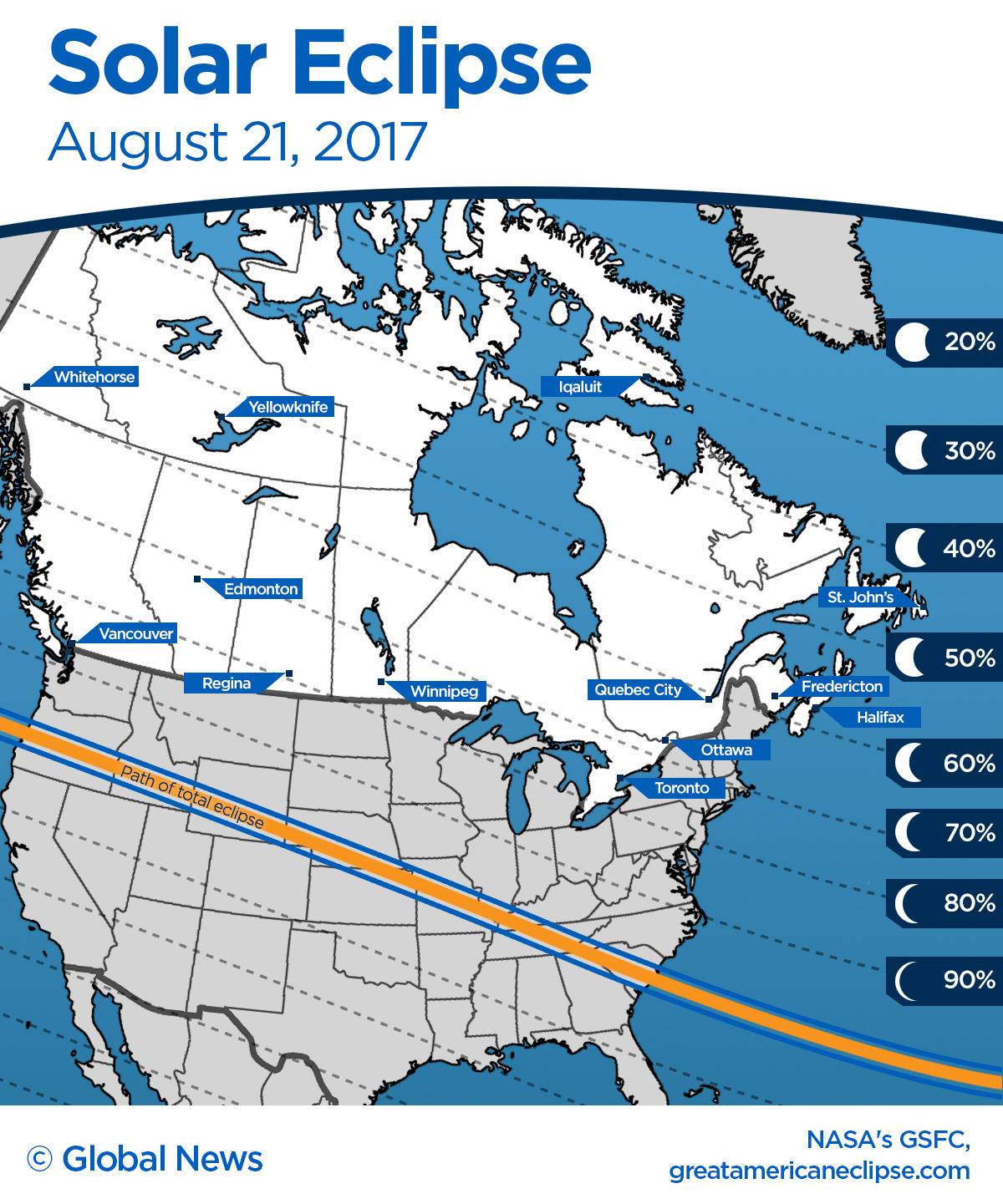For the first time in more than a decade, a solar eclipse will be visible in North America and people across the continent are gearing up to catch a glimpse of the event.

Several states in the U.S. will see a rare total eclipse, meaning the moon will completely cover the sun. Canadians will see a partial eclipse.
The eclipse will begin in Canada in Victoria at 9:09 a.m. PT Monday, and will be visible last in St. John’s at 3:29 p.m. NDT.
READ MORE: Everything Canadians need to know about solar eclipse 2017
Edmonton will get to see a partial eclipse, with about 74 per cent coverage. The eclipse begins in Edmonton at 10:24 a.m. MDT, with the mideclipse happening at 11:35 a.m. The eclipse will be over by 12:49 p.m.
“If there’s no cloud to block it out, we’ll see the moon cover close to 70 per cent of the sun,” Sharon Morsink, an astrophysics professor at the University of Alberta, said on the university’s website.
“It will look like the Cookie Monster taking bites out of the sun.”

Get breaking National news
A free viewing session is being held at the Royal Astronomical Society of Canada Observatory at Telus World of Science in Edmonton from 10:30 a.m. until 1 p.m. Free eclipse glasses are available on a first-come, first-serve basis.
READ MORE: What Canadians can expect during the solar eclipse on August 21
If you plan to head outside to see the eclipse, you’re asked to take precautions to protect your eyes.
Viewers should not look at the eclipse with the naked eye, solar glasses are to be used. Do not attempt to view the eclipse with regular sunglasses or 3-D movie glasses, as they do not provide safe protection for the eyes.
READ MORE: Can you really go blind if you stare at the solar eclipse?
Those who have to stay inside Monday can watch the entire event on NASA’s website, beginning at 10 a.m. ET. According to NASA’s website, the stream will cover the path of totality, additional shots from NASA aircrafts, satellites, and telescopes.









Comments